|

by A. Sutherland
January
16, 2019
from
AncientPages Website
Spanish version
Italian version
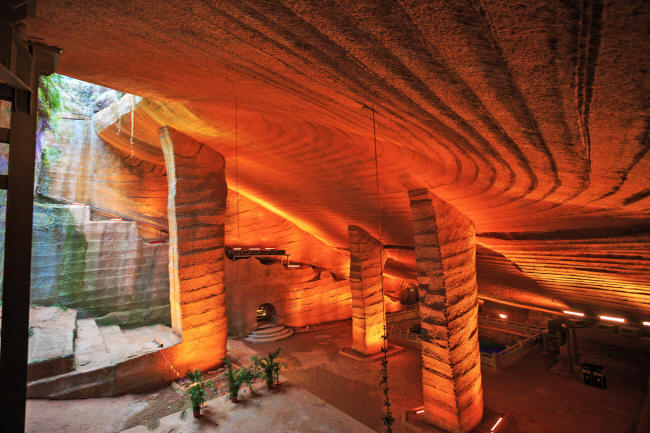
Fascinating and
mysterious underground Longyou Grottoes (also known as
Longyou Caves) must have been some
kind of an extraordinary man-made project of the ancient skilled
builders, who created them more than 2000 years ago.
They have long been the subject of great fascination for both
scholars and laymen alike but until now, no one was able to solve
the mystery of their creation.
Researchers from several countries around the world visited and
investigated the Longyou Grottoes, which are believed to date to a
period before the creation of the
Qin Dynasty in 212 BCE.
Description Of
The Caves
The caves are very large considering their man-made origin:
the average floor
area of each cave is over a 1,000 square meters(11,000 sq ft),
with heights of up to 30 meters (98 ft), and the total area
covered is in excess of 30,000 square meters (320,000 sq ft).
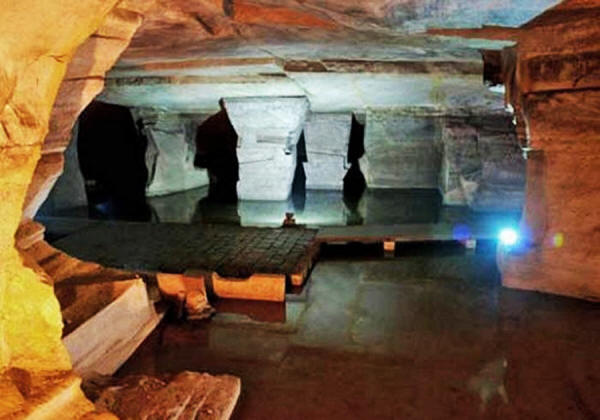
The ceiling, wall and pillar surfaces are all finished in the same
manner, as a series of parallel bands or courses about 60 cm wide
containing parallel chiseling marks set at an angle of about 60° to
the axis of the course.
They have maintained
their structural integrity and appear not to interconnect with each
other.
The areas of grottoes differ from 1,000 to 3,000 square meters. Each
grotto makes a downward vertical extension from the rectangular hole
with a height of approximately 30 meters.
The Longyou Grottoes are located at Phoenix Hill, 3 km north from
Longyou County Quzhou prefecture,
Zhejiang province, China.
Anonymous Builders,
Unknown Purpose Of Construction
Unfortunately, there are no historical records of their
construction, no construction plans or methods of their design have
ever been found.
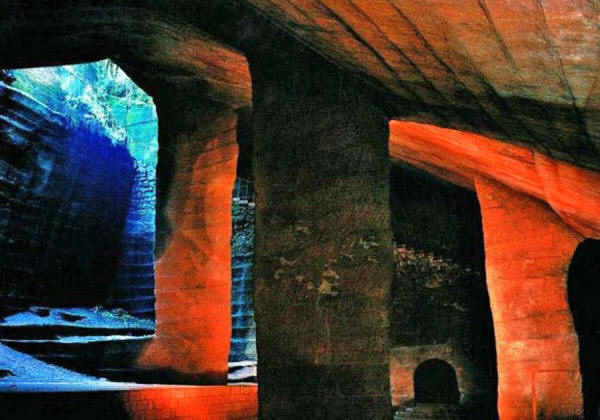
-
Why have these
large artificial sandstone structures been able to maintain
the stability for so long?
-
Were they
constructed by ancient Chinese or an unknown very
advanced civilization present in the region at that
time?
Decorated With Lines
And Symbols
The walls, roof, and stone columns of each of the grottoes are
decorated with chisel marks - lines and symbols - probably
deliberately left by the ancients.
Do these symbols have only ornamental purpose, or are there a hidden
message within the walls that has yet to be deciphered?
Among twenty four discovered grottoes - all of which were carved by
hand - there are seven that are decorated with patterns clearly
resembling the
seven stars of the Big Dipper.
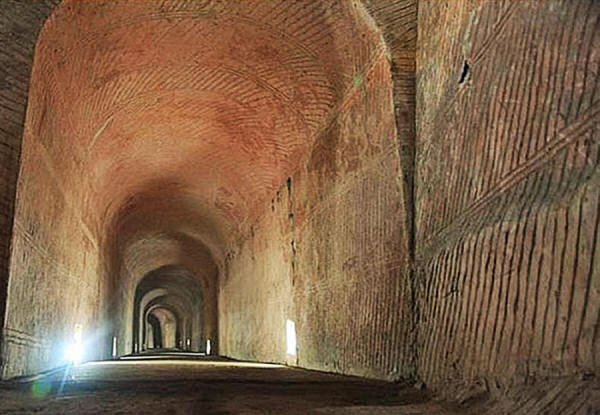
None of the caves are connected with each other, but many of them
share thin walls.
As Yang Hongxun,
an expert at the Archaeological Institute of Chinese Academy of
Social Sciences, explained,
"at the bottom of
each cave, the ancient builders wouldn't be able to see what the
others were doing in the next grotto.
But the inside of
each cave had to be parallel with that of the other, or else the
wall would be holed through. Thus the measure apparatus
should
have been very advanced.
There must have been
some layout about the sizes, locations, and the distances
between the caves beforehand."
Many questions regarding
the Longyou masterwork have never been answered.
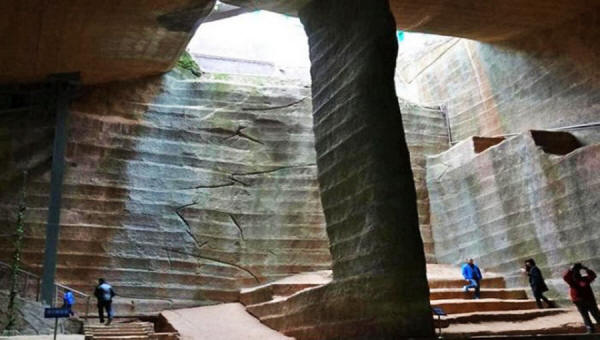
The four caves, for
example, cover an average floor surface of 1,200 square meters, so
each of the caves should have involved excavation of 36,000 cubic
meters of stone.
Since a total of 24 such
caves have already been found in Shiyanbei Village, the overall
excavation would be 900,000 cubic meters.
Could Ancient
Chinese Build Them?
According to an estimation:
if one man can dig
and carry out 0.5 cubic meter of stone every day, then building
these 24 caves would require 1,000 strong men to work 24 hours a
day, seven days a week for about 5 years.
However, this is only a
conservative estimation, because,
'the deeper the cave
goes, the more difficult in excavation and transportation will
be.'
One theory suggests that
large rock grottoes fully filled with water can be stable and
integrate for thousand years. Other issues must wait for answers.
The modern rock mechanics and rock engineering are younger than 100
years and have never contributed with this kind of very
advanced constructions.
Video
|






